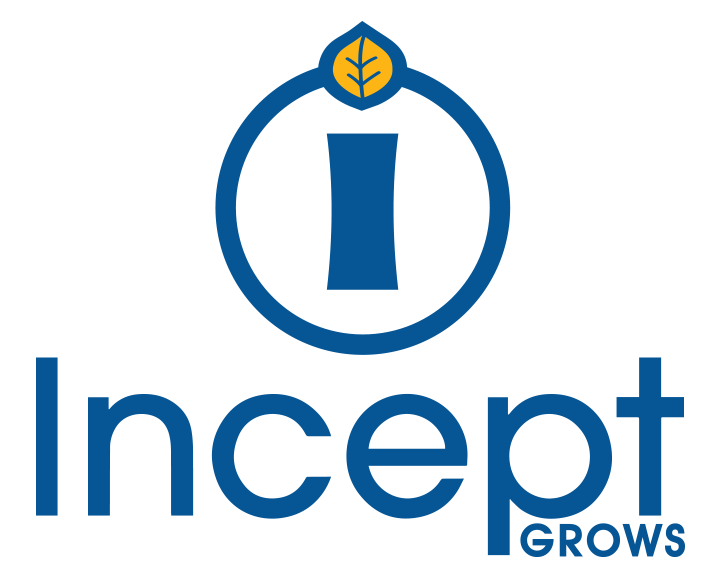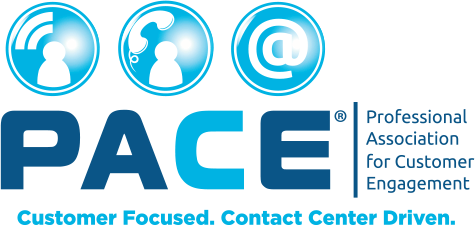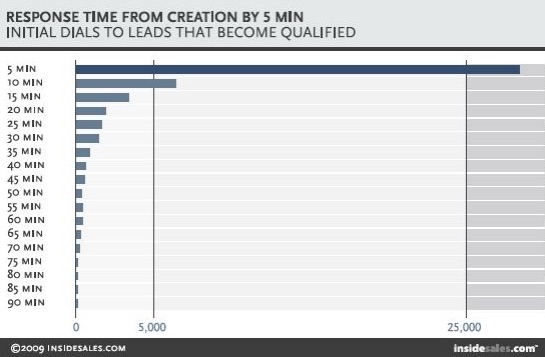3 Simple Ways To Show the Value of Your Association's Membership
Networking and professional development are the core purpose of any association. The drivers for each of those things relies upon a high level of membership engagement. We’re all competing for each other’s time and in today’s busy world it’s easy to take a backseat if you aren’t actively marketing and keeping yourself in front of your members. I’ve had the opportunity to partner with many associations throughout my career and here are a few things I’ve learned along the way about showing the value of your membership.
Networking and professional development are the core purpose of any association. The drivers for each of those things relies upon a high level of membership engagement. We’re all competing for each other’s time and in today’s busy world it’s easy to take a backseat if you aren’t actively marketing and keeping yourself in front of your members. I’ve had the opportunity to partner with many associations throughout my career and here are a few things I’ve learned along the way about showing the value of your membership.
1. Secondary contacts are just as important as the primary contact
Especially with corporate accounts, it’s common practice to have an account manager communicating with only one contact within the organization. In this case you’re relying on that one person to transfer all your information and value to the rest of their team which is a bold assumption. Always interact with all roles who can benefit from the resources that are associated with their membership. It may require additional resources to combat data decay and keep everything up to date but the best way to do this is by adding all applicable parties to your email distribution as well as any promotional calling campaigns.
2. Ask for feedback, then implement it
In other words, listen to your members. A project I recently worked on was an end of the year wrap up for a client of ours. I reached out to each of their members to say thank you for being with us and inform them on some of the newer events on the horizon for the coming year. This provided the opportunity for back and forth open dialogue, so we could receive feedback on some of the different things they liked the best, and vice versa. In addition, you can’t go wrong by checking in occasionally just to gauge everyone’s temperature.
3. Spotlight your members
This is your opportunity to be matchmaker and help facilitate engagement among your members. A lot like dating, businesses join associations because they’re trying to “get out there” so to speak. As stated in the first sentence, “networking and professional development” are number one. I’m sure you have a blog or newsletter that you can feature a new member each week, month, etc. Highlight their date joined, company history, value propositions so they can be seen by the rest of the organization. If a business relationship can stem from one of these posts it’ll be a constant reminder of the value of your association.
Far too often do I see associations take a passive role when it comes to engagement. I’d argue that retaining your current member base is more important than new member recruitment when it comes to long-term growth potential. This goes for any business; it’s much easier and cost effective to keep a current customer than it is to acquire a new one so it’s important to continually show your members the value of your association.
How do you show the value of your association’s membership?
Case Study: Driving Members to Events Using Facebook
Driving members to events can be challenging for associations, especially when budgets are tight. But using Facebook to recruit new and existing members to events can be done successfully without spending a significant amount of time and money.
Today we’d like to share a short case study of a successful event recruitment example for The Professional Associations for Customer Engagement.
Driving members to events can be challenging for associations, especially when budgets are tight. But using Facebook to recruit new and existing members to events can be done successfully without spending a significant amount of time and money.
Today we’d like to share a short case study of a successful event recruitment example for The Professional Associations for Customer Engagement.
The Problem
Incept’s client needed more attendees for their upcoming event but didn’t know where to find them. Their main form of marketing, email, was not driving enough conversions.
The Solution
Incept suggested a Facebook campaign using custom audience targeting of their 4,000 past and present members as well as new prospects created from an attribution-based audience for their target market.
The Promotion
The campaign used several styles of ad copy and creative in order to optimize for the best performing combinations. Short videos and carousel style ads drew in the most engagement and website visits from the target audience.
The Results
During the 4 week campaign, we reached 1,196 people with 11,478 impressions. 974 of the prospects reached and 68% of the clicks were generated from the attribution audience, prospects likely not aware of our client’s organization before this campaign. This created awareness of the event, their brand, and additional attendees for their event.
The Facebook pixel recorded 36 new registrations for the event during the time of the campaign, a potential ROI of 2,189%.
The Professional Association for Customer Engagement
“Our partnership with Incept has been a long and fruitful one. Being such a small staff for a non-profit doesn’t afford us the ability to have experts in every aspect of our business operations. Incept has guided us on different aspects of our organization. They have formulated, implemented and successfully executed plans for us on many different initiatives. Through all of those initiatives, Incept made sure that we were comfortable and knowledgeable with the process and the results. We value partnerships and there is no partnership that we value more than the one we have with Incept. They are our true trusted advisor.”
How Quickly Should I Follow Up With Inbound Leads?
Last November I attended a session at Hubspot’s Inbound conference called 'The Art of The Five Minute Response Time.' After a quick go at the #ManequinChallenge, Josh Harcus, author of A Closing Culture, spoke about the impact this rule has had on his organization.
A few months ago I attended a session at Hubspot’s Inbound conference called 'The Art of The Five Minute Response Time.' Josh Harcus, author of A Closing Culture, spoke about the impact this strategy has had on his organization:
6x revenue growth in 12 months
9x shorter sales cycle
500% growth in team
Since learning of this art, we've challenged our team to decrease our response time significantly, and the results have been just as exciting.
Current State Of Sales Follow-ups
The Harvard Business Review found that 26.1 % of leads are followed-up with within 5 minutes, while the average response time for all leads is 42 hours. It's no secret that 35-50% of sales go to the vendor that responds first, so if buyers are contacting you when they are ready to talk, why aren't we making every effort to speak with them immediately?
Just look at the proof to the right. Dr. James Oldroyd published the Lead Response Management Study, which found that the odds of making a successful contact with a lead are 100 times greater when a contact attempt occurs within 5 minutes, compared to 30 minutes after the lead was submitted.
What's even worse than a delayed response? The average number of times a lead is followed up with is 1.3 times. Not only are we not prioritizing these conversations, but we're giving up after just one call?
Want to know different ways you can follow up with your inbound leads? Here are 3 ways to follow-up with inbound leads that can help turn your leads into customers.
Download Our Step-By-Step Guide for Ideal Inbound Lead Follow-Up Strategy Now
We’ve tested several strategies in our own business and on behalf of our clients and found that the ideal inbound lead follow-up strategy requires 2 things:
Urgency in response
Commitment to sales cadence if the prospect does not immediately answer
Fill out the form to the right to download our step-by-step guide to effectively follow-up with inbound leads.
#RelationshipsMatter | Employee Spotlight: Paul Tucker
We've been placing a spotlight on some of Incept's finest team members! Today we bring you Paul Tucker, one of Incept's Account Growth Specialists.
We've been placing a spotlight on some of Incept's finest team members! Today we bring you Paul Tucker, one of Incept's Account Growth Specialists:
WHAT DO YOU DO HERE AT INCEPT?
I work in the Grows division, helping companies achieve new growth, whether it be through lead generation, driving attendance for events or even as a customer support agent.
WHAT DO YOU ENJOY MOST ABOUT WORKING IN THE LEAD GENERATION INDUSTRY?
I get a lot of enjoyment out of helping others. If I can put our clients in front of a warm lead and take some of the stress off of their shoulders, then I’m happy to do so.
WHAT DO YOU ENJOY MOST ABOUT WORKING AT INCEPT?
I think one of the things that has impressed me the most about Incept is that they understand that you have family and encourage you to do what you need to take care of them or be there for them. If I need to stay home and care for my family, they want you to do that.
WHY DO RELATIONSHIPS MATTER TO YOU?
I’m a pretty social guy all around so it’s always been pretty easy for me to relate to someone, whether it’s a co-worker or a prospect I’m calling. I think in this business that comes in really handy. If I can build even a small relationship with a prospect, it makes the transition to the client that much easier and increases the opportunity for them to close a sale.
In regards to work, having established some sort of relationship with everyone on our team helps us hold each other accountable. We can be comfortable enough with each other to have healthy and constructive conversations to help ourselves improve as individuals and as a division.
WHAT HAS BEEN THE MOST IMPACTFUL RELATIONSHIP YOU’VE HAD HERE?
This is a tough one for me to answer because there have been quite a few people that I’ve been able to talk with and learn from. I would say one of the most impactful relationships I have here is with my co-worker Cory Carney. This was one of the first jobs that I’ve had where I wasn’t referred by a friend or someone I already knew. I truly came in here without knowing anyone. Cory and I quickly found some common interest and that connection allowed me to get more comfortable in my new environment rather quickly. That helped me establish a bond with the team as a whole and feel like “one of the gang” since day one.
HOW HAS THE FOCUS ON HAVING PRODUCTIVE CONVERSATIONS IMPACTED YOUR RELATIONSHIPS OUTSIDE OF WORK?
One thing that has helped me is the phrase, “get comfortable with being uncomfortable.” This has helped me in my personal relationships because sometimes you have to have uncomfortable conversations. Finding the right way to have that conversation makes it a lot easier and in the long run, leads to healthier relationships.
WHAT’S YOUR FAVORITE THING YOU DID IN THE LAST YEAR?
The most exciting thing for me was welcoming our daughter into the world. She was born in August of 2017 and she has been a blessing for our family. It truly is amazing to see how much she grows and how much she learns every single day!
LET'S PLAY TWO TRUTHS AND A LIE:
- My favorite NFL team is the Denver Broncos.
- I’ve lived in 4 different states.
- I am a vegetarian.
Can you guess which one is a lie?
4 Tips For Creating an Effective Email Template For Your Lead Generation Campaign
If used correctly, email is the perfect complement to any lead generation campaign. Not to mention, it’s a known statistic that email boasts a 4400% ROI so you can ensure you’re spending your budgeted dollars in the smartest way possible. The problem is that most people don’t know how to form a template that can create a sense of intrigue with the prospect. Here are a handful of tips to help you create a template that will drive results.
If used correctly, email is the perfect complement to any lead generation campaign. Not to mention, it’s a known statistic that email boasts a 4400% ROI so you can ensure you’re spending your budgeted dollars in the smartest way possible. The problem is that most people don’t know how to form a template that can create a sense of intrigue with the prospect. Here are a handful of tips to help you create a template that will drive results.
1. Less Is More
There is no reason to pack all your value propositions into a single email. Limit yourself to a single paragraph for your first touch. You want the prospect to be able to capture the message in 5 seconds or less, otherwise, you’re going straight to the spam folder.
2. Personalize It
In other words, don’t use the same cookie cutter template for everyone. Introduce yourself, explain briefly why you’re reaching out, how you found the prospect or company, and go for the call to action. Keep in mind the CTA should be something very soft - usually a phone call or meeting.
3. Utilize Your Signature
This is the best way to provide a face to your company. Like the template, it should be short and sweet but this is an opportunity to include your logo with a URL to your website and perhaps a LinkedIn page to help build trust and be 100% transparent with your identity.
4. Strong Subject Line
According to Convince&Convert, 69% of email recipients report email as spam based solely on the subject line and 35% will open just based on the subject alone. My best advice is to always be testing different ideas. Don’t be afraid to mix things up to see which approach yields the highest open rate. A personal preference of mine is a subject that creates a sense of intrigue.
e.g.) “<Recipients Name> have a minute?” “<Your Company Name> Introduction.” “Hoping to Connect.”
How do you use email in your lead generation campaigns?








